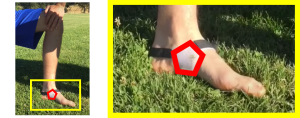This is my knee story. It was my junior year of high school. Midway through the soccer season and 20 minutes into the first half, I had a breakaway on goal. However, just before shooting on goal, a defender was able to get a touch on the ball knocking it away. Instead of making contact with the ball, I made contact with his leg. In doing so, I hyper-extended my right knee. As I was carried off the field, I knew something was not right. However, after 10 minutes of ice and a shot of endorphins, the knee felt great. I felt great. I was ready to go back in.
As I recall, I proceeded to have a great game … amazing what some endorphins will do. But it all came to an explosive end five minutes before the end of the game. I went up for a header, landed awkwardly on my right leg and BOOM! My knee, and more specifically, my ACL exploded. For those of you unfortunate enough to have had a similar experience, you know the sound I’m talking about. I still can’t believe no one else heard the explosion.
Since the knees were never designed to take the twisting, torquing, cutting, and physical demands associated with soccer, many soccer players have their own knee story or stories. There is a very good chance that if a soccer player plays soccer long enough, the knees will sustain some type of trauma or injury. Because of this likelihood and based on my own experience, I believe knee injuries need to be addressed in a special way.
When I coached, I had the following rule: when a player sustained any type of knee injury, whether it was a ‘knock’, a small tweak, or slight hyper-extension, he or she was done for two weeks. It did not matter how good the player was, what important games were coming up, or how well the player was moving around or feeling; he or she was not allowed to practice or play for two weeks. No ifs, ands, or buts!
Besides not playing, I also asked the parents of the injured player to do the following:
- Start icing the knee immediately–20 minutes on, 20 minutes off.
- Take their child to see a doctor, preferably an orthopedic surgeon, within a few days of the injury. If the injury looked bad, I would recommend the emergency room.
- Stress to their child the importance of resting the knee during school–no recess or lunchtime high-jinks.
As a coach, if you chose to follow this rule or already have a similar rule, you will undoubtedly deal with players pleading with you that they are fine and parents who are positive you are overreacting. No matter. You are doing what is in the best long-term interest of the player. Make sure to share this rule with players and parents at the beginning of the season so there are no surprises.
Author’s Note: Though this post is about knees, I believe any leg injury should be treated with precaution. Ankle, heel, toe, calf, hamstring, quadriceps, or groin injuries should all require some type of rest as well as a professional exam. Having a player play with any type of leg injury that has not had time to heal could have negative long-term consequences. At the youth level, compromising any one of these leg parts is simply not worth it.


